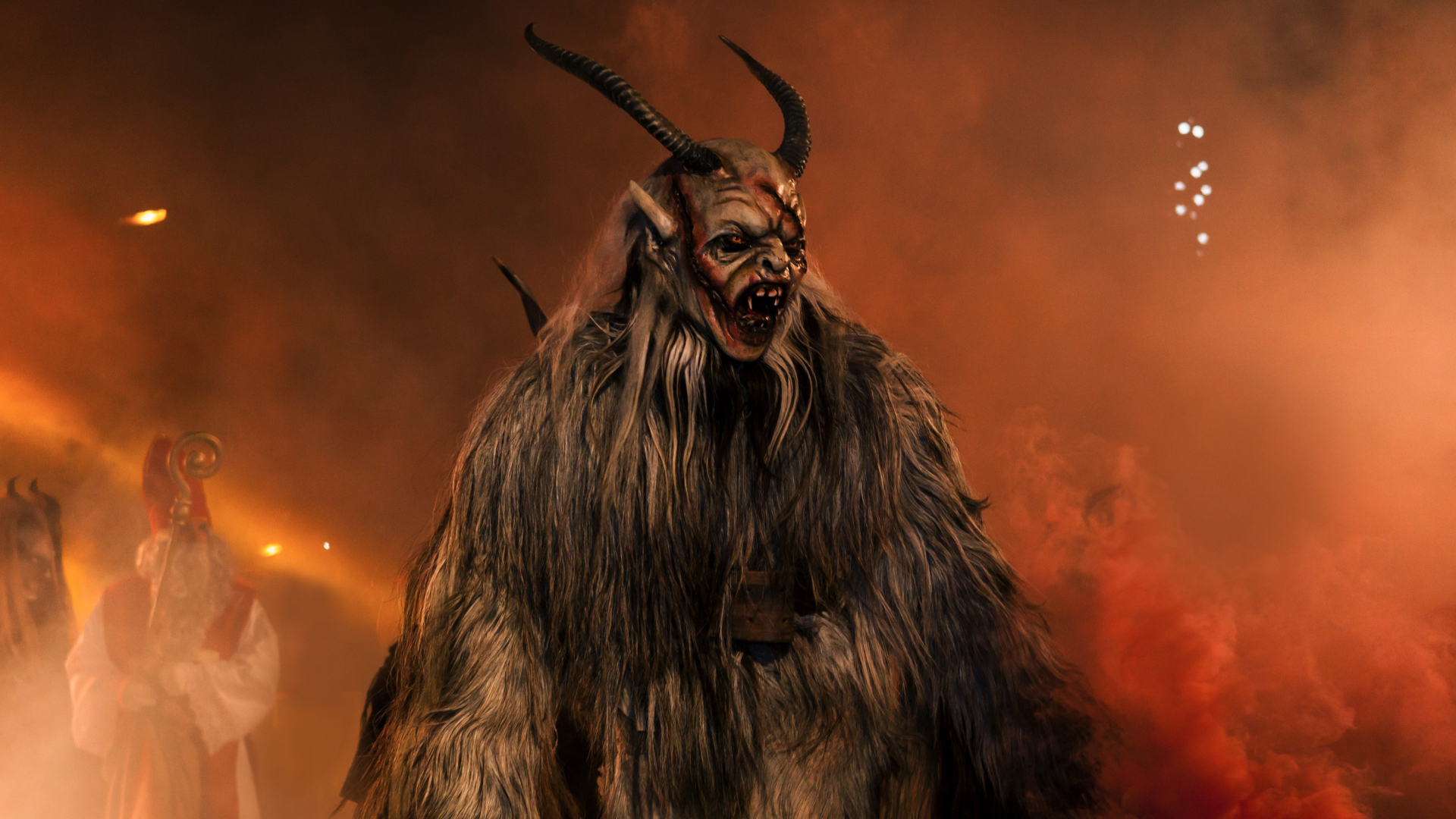
Who is Krampus, and what does he have to do with Christmas?
Krampus is a mythical creature who punished badly behaved children, according to myth.

Every December, Santa Claus comes out and gives presents to good children around the world, according to popular culture. But according to some myths, children who have misbehaved are instead visited by a far more frightening creature: Krampus.
But who is Krampus? Where do these myths come from? And why does Krampus appear around Christmas time?
Krampus is a mythical creature who is often depicted with horns and a demon-like face. According to myth, which likely originated in what is now Germany and Austria, the creature punished children who behaved badly.
Krampus is also called Klaubauf, Toife, Toifi or Toifl (a word that is similar to devil), Matthäus Rest, a social anthropologist at the Max Planck Institute for the Science of Human History in Germany, told Live Science in an email. Rest suspects that the name “Krampus” was introduced in Vienna in the 19th century but is not certain.
Traditionally, Krampus appeared on the evening of Dec. 5, or "Krampus Nacht," (also spelled Krampusnacht) Jennifer Collins, a scholarly communications and reference librarian at the State University of New York who has studied Krampus extensively, told Live Science in an email. Krampus Nacht came just before the feast of St. Nicholas on Dec. 6. In essence, Krampus is the bad cop to Santa's good cop, Collins said.
Krampus would often target children who behaved badly, hitting them with a tree branch known as a "switch," or even kidnapping them in a basket.
If kids were "good," they wouldn't be kidnapped or swatted, and would instead wake up on the sixth to gifts from Santa, Collins said.
Sign up for the Live Science daily newsletter now
Get the world’s most fascinating discoveries delivered straight to your inbox.
Related: Bigfoot: Is the Sasquatch real?
People sometimes dress up as Krampus on Dec. 5 and participate in events called "Krampus runs." This is particularly popular in Germany and Austria.
It's not entirely clear when and how the Krampus customs began.
"The Krampus tradition certainly has several origins, which are located in different historical and geographical contexts," Gertraud Seiser, a researcher in the Department of Social and Cultural Anthropology at the University of Vienna, told Live Science in an email.
During the Enlightenment (1685-1815), Krampus appeared in Vienna, where he was used "as an educational tool to teach children obedience and discipline," Seiser said.
In the 17th and 18th centuries, carnival parades became popular in Bavaria and mountainous areas of Austria, and Krampus may have been incorporated into them. Authorities tried to ban these parades, in part because they led young people to get drunk and riot, Seiser said.
Krampus lore may have originated in Bavaria after the Thirty Years' War (1618-1648), Collins said, noting that the death rate from this war was immense, with some areas losing half their population.
Krampus is not the only monstrous creature to appear this time of year. Dec. 12 is dedicated to Perchta, who sometimes appears as a witch-like creature who "would disembowel the girls who hadn't used up all their wool for the year," Collins said. This day is also popular in southern Germany and Austria. (Historically, knitting clothing was essential for survival in southern Germany and Alpine Austria, and the myth of this creature encouraged girls to knit.)
Growing popularity
The popularity of Krampus has gone up and down over the years.
"In the mid-1800s, it was indeed practiced in only a handful of small regions in Bavaria, Tyrol and Salzburg," Rest said.
In the 21st century, Krampus festivities are more popular than ever, with events occurring around the world.
"Advances in technology and social media may be one reason for an increase in popularity of the Krampus tradition," Ilona Grabmaier, a research fellow in the Department of Social and Cultural Anthropology at the University of Vienna, told Live Science in an email.

Owen Jarus is a regular contributor to Live Science who writes about archaeology and humans' past. He has also written for The Independent (UK), The Canadian Press (CP) and The Associated Press (AP), among others. Owen has a bachelor of arts degree from the University of Toronto and a journalism degree from Ryerson University.









